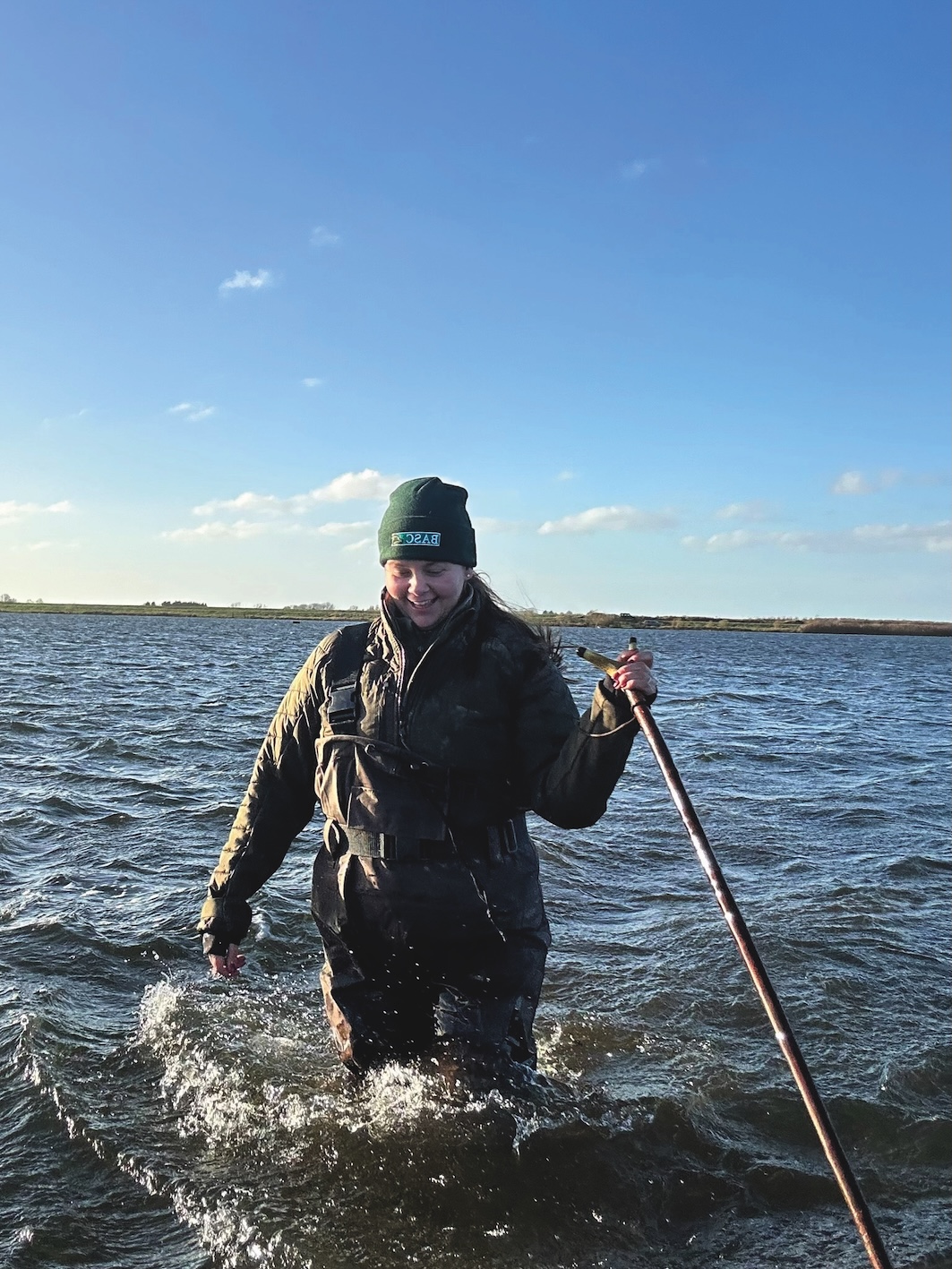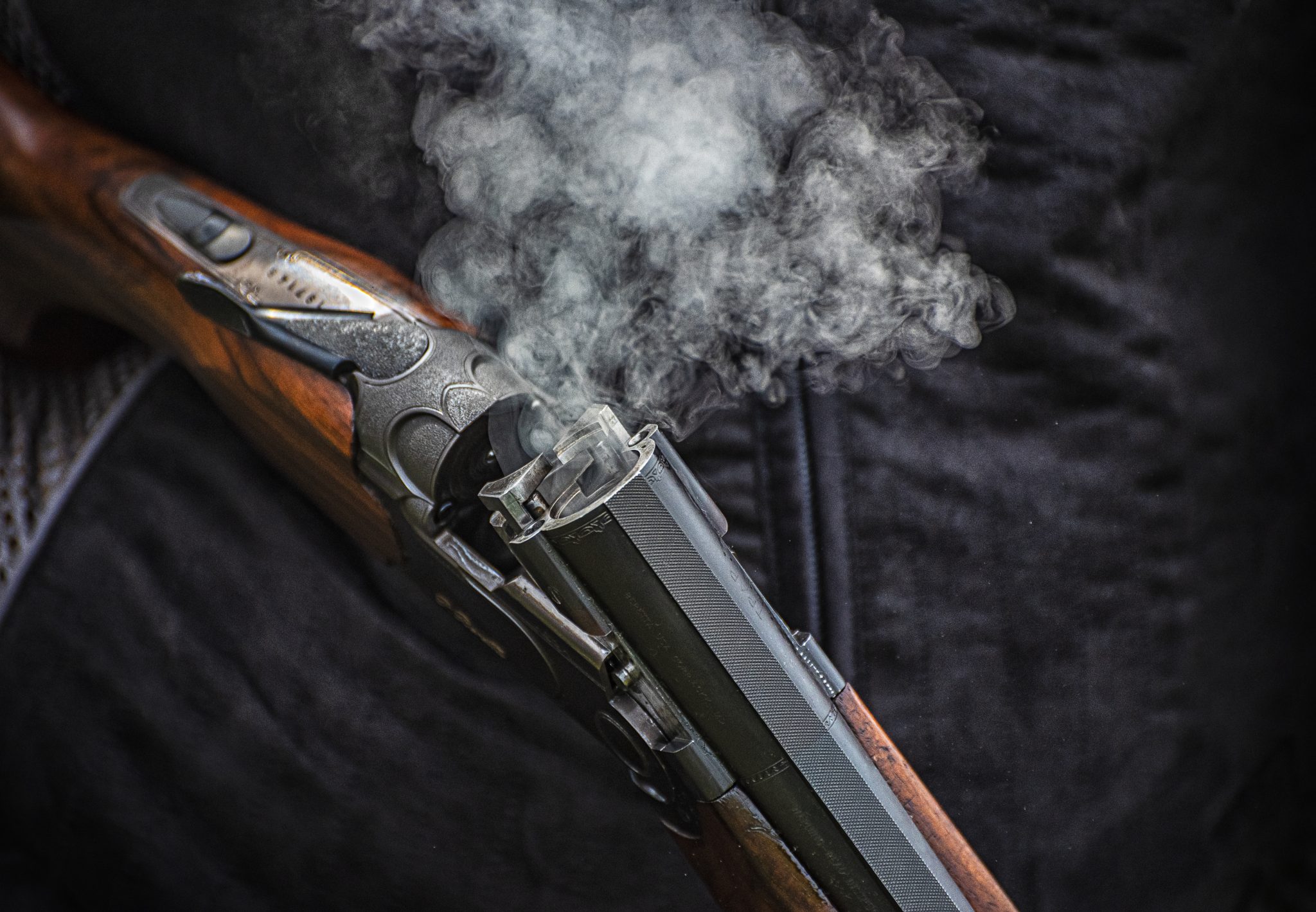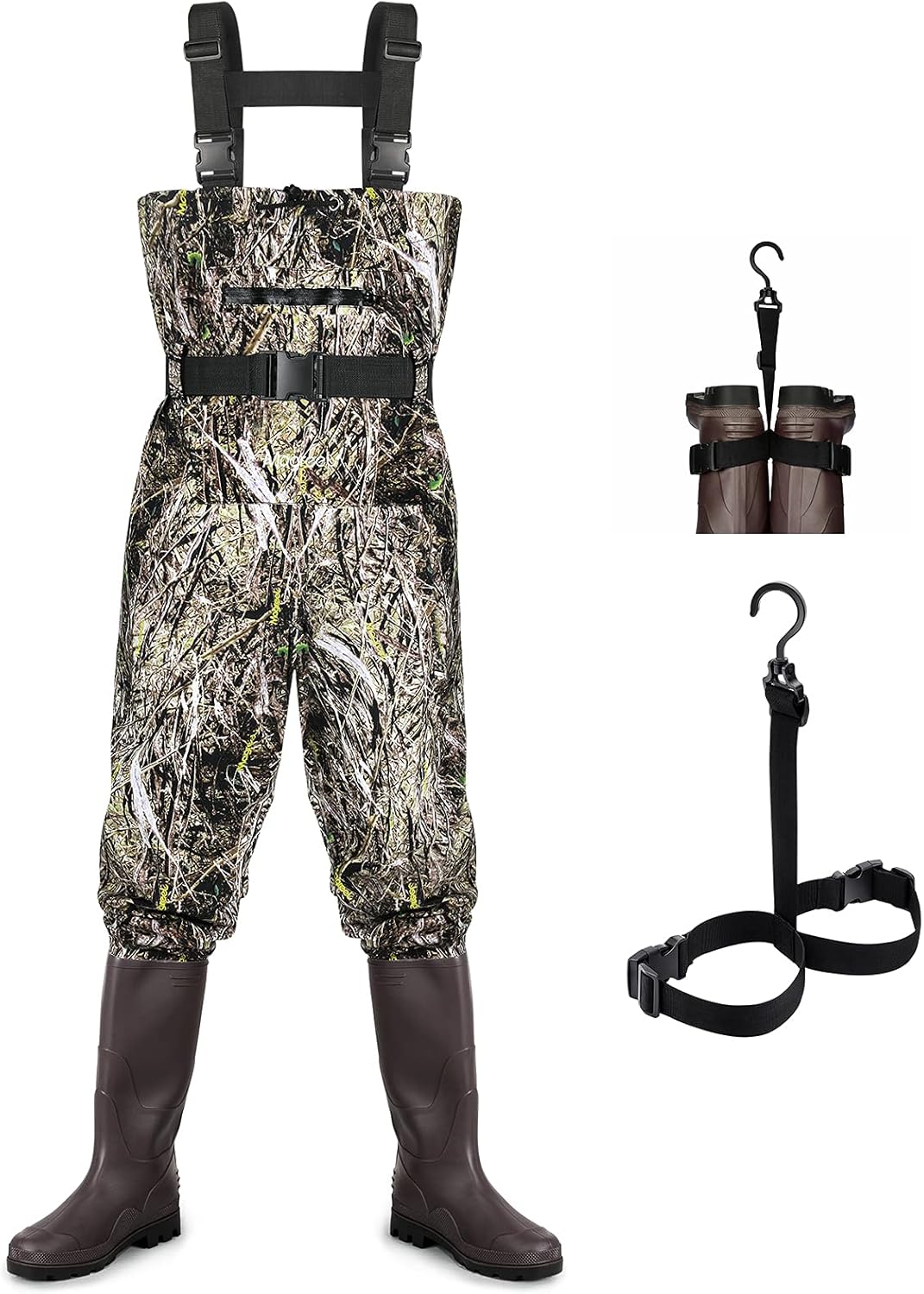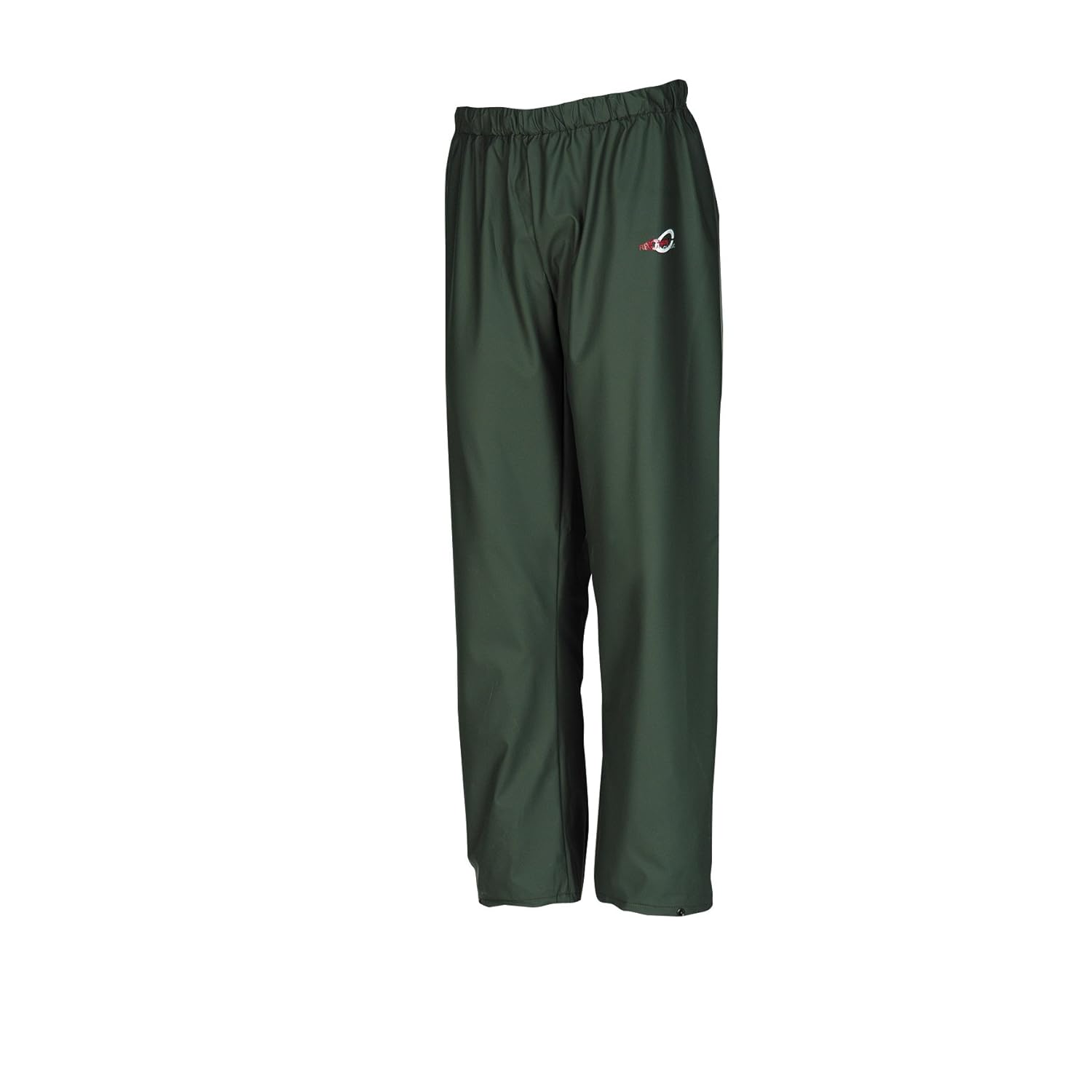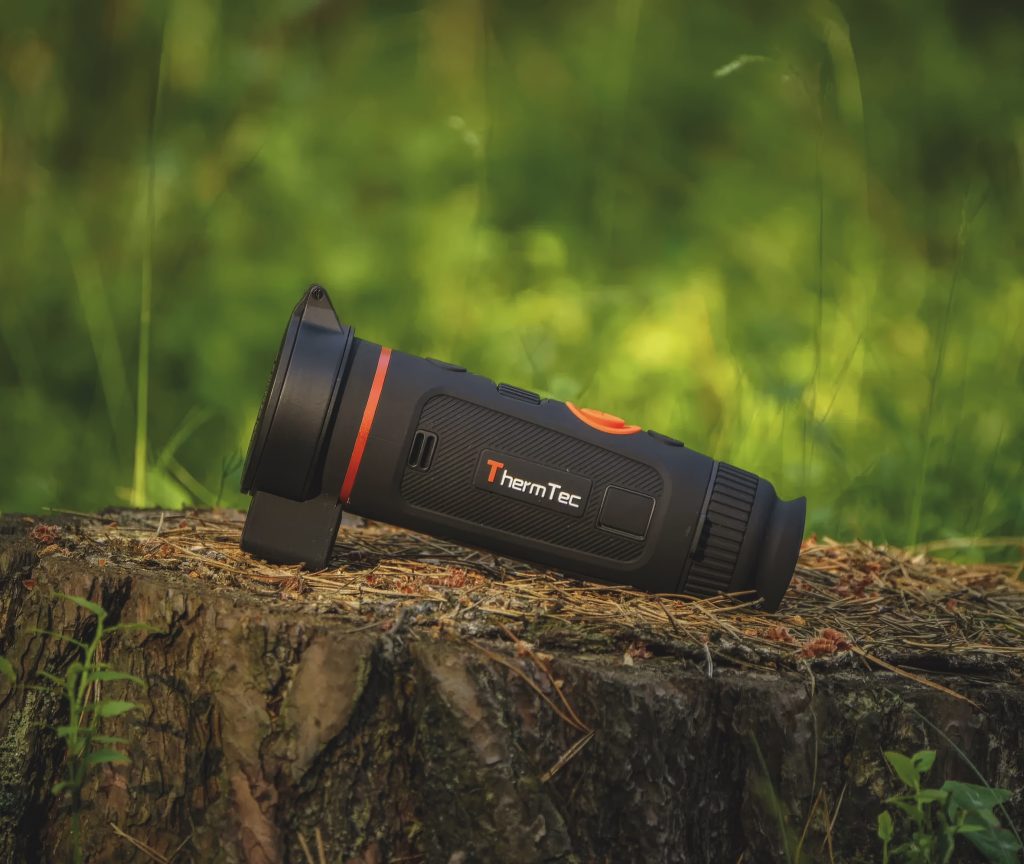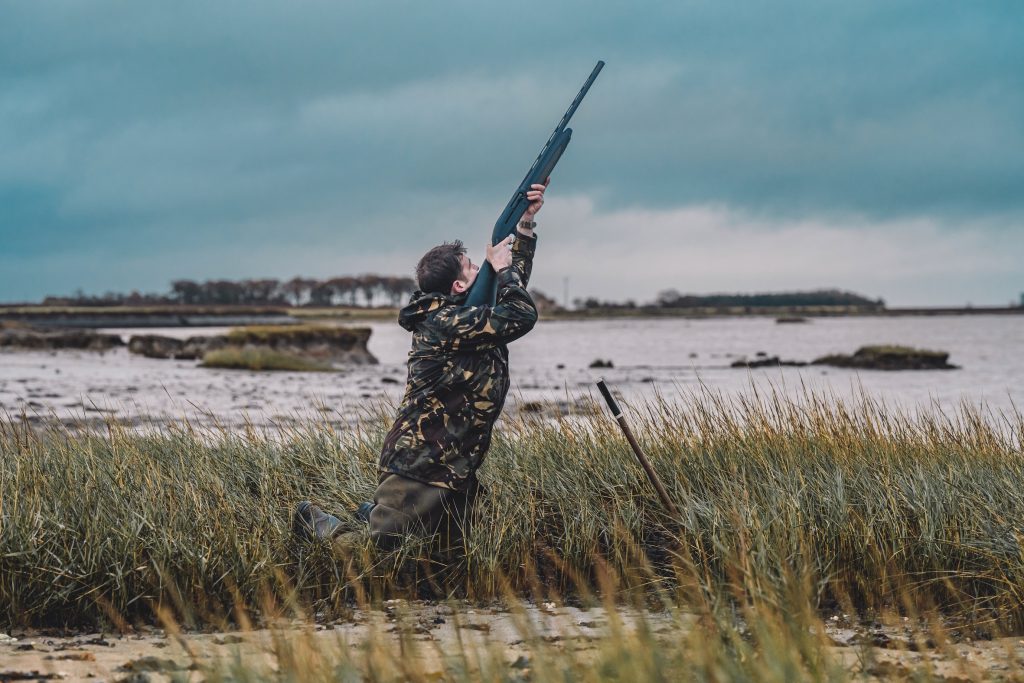Win CENS ProFlex DX5 earplugs worth £1,149 – enter here
Best waders for wildfowlers
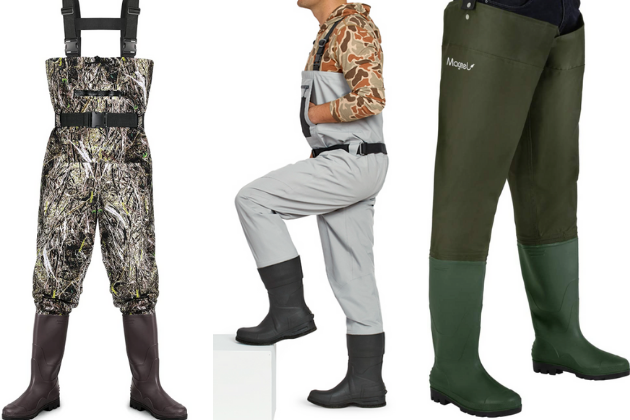
Choosing footwear for any fieldsport is ultimately down to personal preference and affordability. This is true for wildfowlers too. I have used a range of waders over the years and the following list of the best waders for wildfowlers is a selection that would be very useful. (You might also like to read our list of the best wildfowling jackets.)
Neoprene and PVC chest waders
The most popular style of wader worn by UK wildfowlers and international duck and goose hunters has to be neoprene chest waders. I wore neoprenes for a large part of my fowling, up until recent years. They were comfy and kept me warm and dry. They can, however, be susceptible to tears and splits, although most come with a repair kit to keep them watertight. Having the rising water level seep through the groin seam on a cold December morning can be a bit of a shock to the system, as I am sure many experienced wildfowlers will testify. Reedy ground is probably the worst terrain to gash through the neoprene and, like most fabrics, it doesn’t fare well against barbed-wire fences.
A significant upside to neoprene is that it provides a great insulation layer when sitting or kneeling in cold mud during the harsher winter months. Keeping warm is essential to make a flight comfortable when waiting for the birds to move on those bitterly cold outings. In addition, the padding layers generally improve comfort when shooting on hard ground or rocky breakwaters. The insulation layer also does a great job of keeping your core heat in during wet and windy adventures.
A downside to neoprene waders is that they are awkward to put on, especially when you are standing on one foot in the dark balancing against the car as the wind buffets you. That said, I still have a set of neoprenes in the man cave that I will wear if the situation calls for them, typically when there are cold winds forecast and there is not a lot of walking involved. (Have a look at our list of the best wildfowling gear.)
1. Ultra Fishing Waterproof Neoprene Chest Waders with Boots £64.99
Best for no-frills
- Sizes 9-12
- Waterproof from chest to toe
- Material: Neoprene
- Anti-slip sole on boots
- Chest pocket for storage
- Repair kit included
These chest high waders are made from thicker neoprene which will help to insulate you against the cold. They are a good price, effective and do the job you want them to.
BUY NOW
2. Magreel Chest Waders, Camo Hunting Fishing Waders for Men Women with Boots, Waterproof Bootfoot 210T Nylon Wader for Duck Hunting Fly Fishing, Size 9-Size 13 £42.99-£52.99
Best for camouflage
- Material: Nylon and PVC
- 100% waterproof
- Tried and tested
- Dual layer construction
- Fit into a backpack
- Waist and height adjustable
Thick soles on the boots protect your feet from sharp rocks on a river bed or the foreshore. The front pocket keeps your phone, keys and other small items handy.
BUY NOW
Breathable chest waders
I moved on to breathable chest waders when I found a great pair in my local fishing shop with the boots attached, as opposed to the sock version. These set me back just over £100. As the name would suggest, they are an alternative chest wader and they are a boon because they are cooler due to enhanced breathability and also considerably lighter. I found that they were useful all year round, similar to a shell-style jacket, and could be used in cold conditions by layering clothing underneath with thick trousers or thermals.
I think that the breathable waders are far more versatile than the conventional neoprenes, mainly because of their weight and breathability. They are especially good for the early season or mild weather, which seems to last well into December these days. They are great for wading in deep water and can have jackets tucked into them to help you remain a little cleaner.
One thing to be aware of is the reduced insulation with breathable waders, which renders the wearer more susceptible to colder temperatures when wading or sitting in the mud.
1. Night Cat Fishing Waders for Men Women Hunting Chest Waders with Boots Waterproof Breathable Crosswater Bib Pants £42.49-£67.99
Best for price
- Sizes: 6-13
- Colour: Green, black, grey neoprene
- 100% waterproof
- Fabric: Nylon reinforced PVC body
Lightweight waders that will keep you dry and warm with PVC cleated, anti-slip, anti rub boots. The waders have taped seams to keep out any water and dirt during a long day. After use, just flush the waders with water and hang up to dry out of the sun.
BUY NOW
2. Clearwater bootfoot wader by Orvis £298
Best for quality and value
- Fabric: Nylon shell, polyurethane membrane/nylon tricot liner
- Washable: Hand wash
- External storage pocket with stretch panel
- Kangaroo-style handwarmer pocket
- Sizes: M to XXL
These waders come with integral felt-soled boot feet and are constructed from a waterproof but durable fabric. They are breathable and avoid any feeling of bulkiness.
BUY NOW
3. Men’s ultralight convertible wader by Orvis £325
Best for versatility in changing weather
- Convert from waist high to full chest waders in seconds
- Four-layer, waterproof, breathable nylon shell
- Fabric resists punctures and scratching
- Outer shell 100% nylon, membrane polyurethane, liner 100% nylon
- Water resistant zipped storage pocket
- Sizes: regular to extra long
These adaptable waders will keep you warm and dry in colder weather and when the sun is out you can roll them down to waist level. They are comfortable and lightweight so will perform without adding bulk or making you feel weighed down.
BUY NOW
4. Men’s pro underwader trousers by Orvis £139
Best for extra warmth
- Ideal for wearing with breathable waders
- High pile fleece interior
- Rear zip security pocket
- Water repellent finish
- Washable: Yes
- Fabric: 94% polyester/6% elastane.
- Sizes: S to XXL
Breathable waders are an excellent invention but you’ll often need an extra layer on your legs to keep you warm and comfortable out on the marsh. These underwader trousers are ideal and also have size vents to increase ventilation when needed.
PVC thigh/hip waders
I bought a pair of thigh waders from my local fishing shop a few years ago for summertime wading as they were only £24. These turned out to be an excellent investment and I have since used them for about 95% of my wildfowling. I found that they are super convenient to use as they can be slipped on and worn to the marsh, saving time and effort at the other end.
The thigh waders are ideal for me as I rarely have to wade deeper than them and will know well in advance if I need to opt for chest waders. They are comfy to use and less restrictive to walk in than other waders while providing the desired function. I team the waders with Flexothane leggings to allow me to sit down in the mud. (Read our suggestions for the best waterproof trousers.) Like the waders, the super waterproof leggings are fantastic as they wash down really easily after the flight and dry quickly, keeping my gear clean.
The main downside to PVC, be it thigh or chest waders, is that the waterproof quality comes at a loss of breathability and they, too, can be a little sweaty. However, this is only on the legs with thigh waders, unlike chest waders, which can overheat 80% of your body. The positives outweigh the negatives, which is why they became my go-to choice for the past few seasons.
There are plenty of options out there, and it is simply down to trial and error to find the best footwear option for you.
1. Magreel Hip Waders Lightweight Waterproof Hip Boots for Men and Women, PVC/Nylon Fishing Hunting Bootfoot with Cleated Outsole, Size 7-Size 13, Army Green £24.99-£31.99
Best for walking
- Sizes: 7-13
- Fabric: Nylon, Polyvinyl Chloride
- Colour: As shown
- Durable and lightweight
- Boots are anti-slip and wear resistant with cleated soles
- 100% waterproof
When you choose hip waders you need to make sure they are reasonably comfortable for walking and these fit the bill. They will keep your feet and legs dry and warm whether you’re fishing, cleaning or wading over the foreshore.
BUY NOW
2. SIOEN Mens Flexothane Classic Rotterdam Trousers £28.83
Best for using with thigh waders
- Material: Flexothane
- Sizes: S-3XL
- Waterproof, windproof, noiseless, supple
- Elasticated waist
- Legs adjustable by press studs
Flexothane is an excellent fabric for outdoor use and it is highly tear resistant. These trousers will keep you dry and comfortable out on the marsh and when you get home you can just clean them up in the washing machine.
BUY NOW
Related Articles
Get the latest news delivered direct to your door
Subscribe to Shooting Times & Country
Discover the ultimate companion for field sports enthusiasts with Shooting Times & Country Magazine, the UK’s leading weekly publication that has been at the forefront of shooting culture since 1882. Subscribers gain access to expert tips, comprehensive gear reviews, seasonal advice and a vibrant community of like-minded shooters.
Save on shop price when you subscribe with weekly issues featuring in-depth articles on gundog training, exclusive member offers and access to the digital back issue library. A Shooting Times & Country subscription is more than a magazine, don’t just read about the countryside; immerse yourself in its most authoritative and engaging publication.



